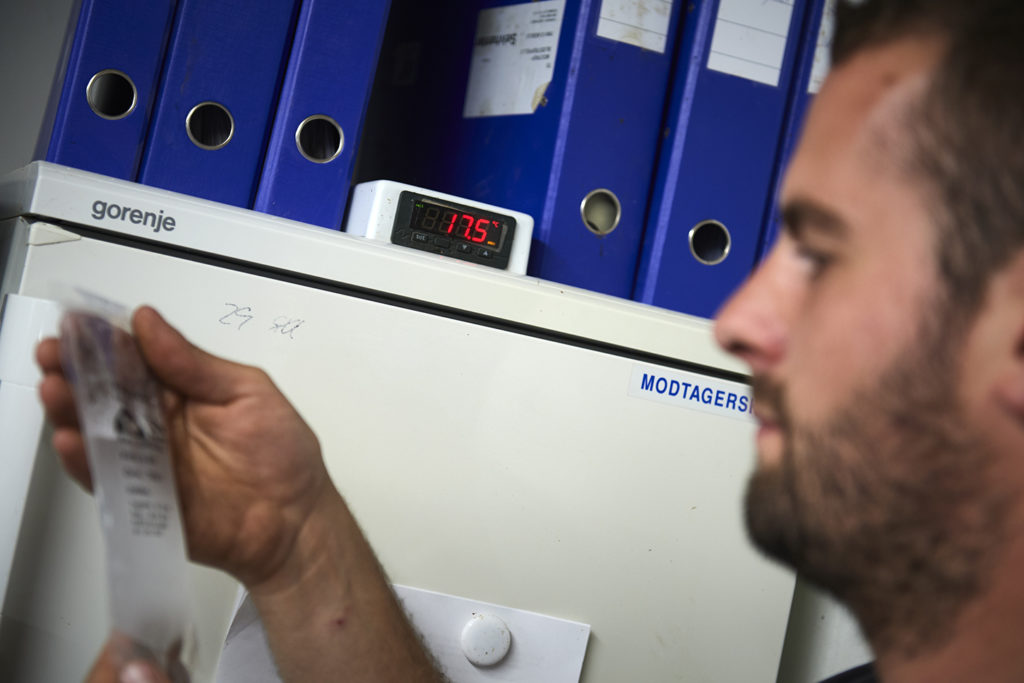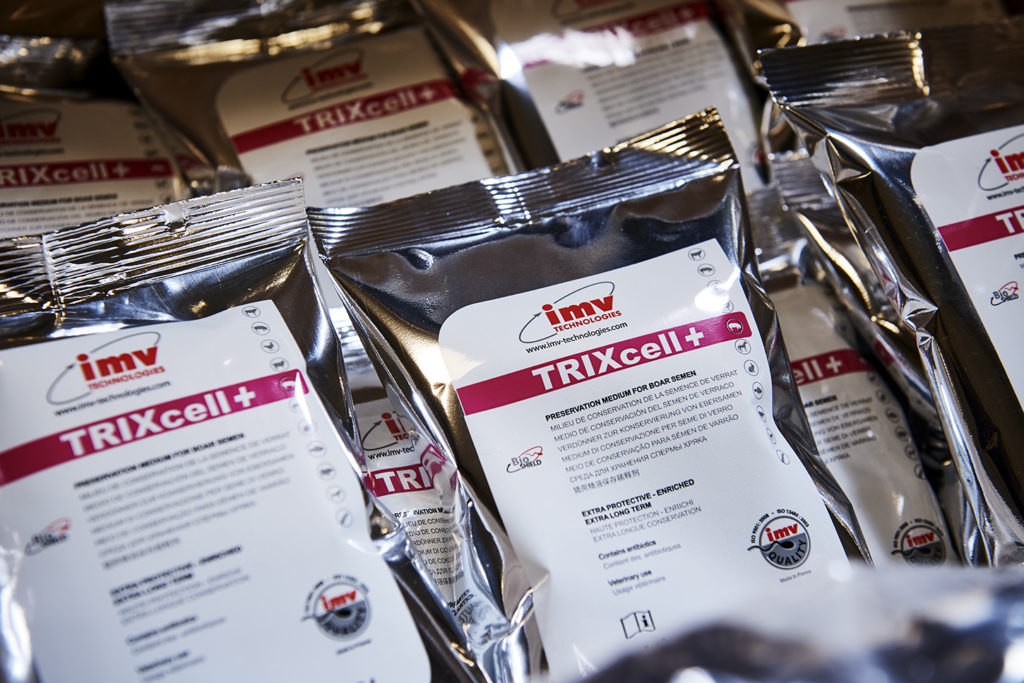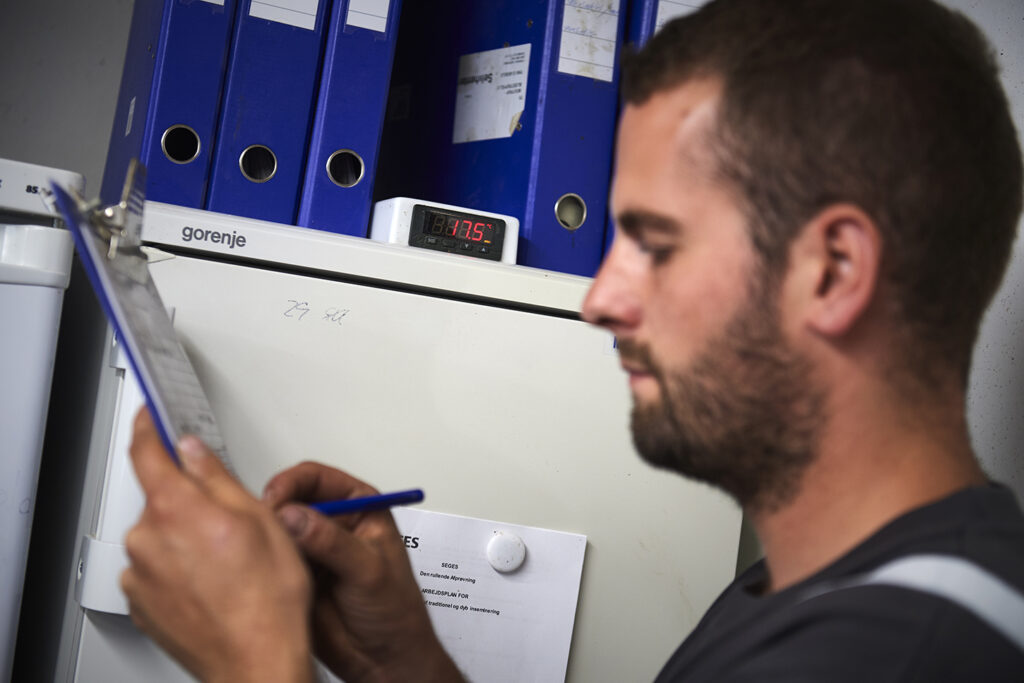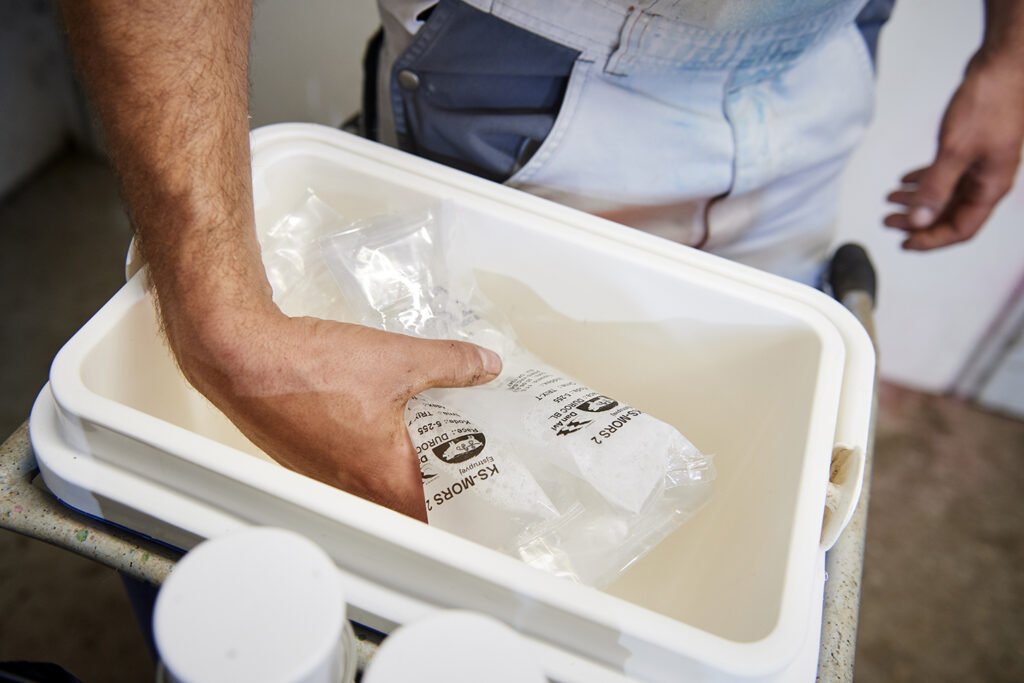Semen Doses – Maximise productivity with correct handling
Content
How to store and handle semen doses
Artificial insemination has become a standard, especially among modern farms working with DanBred high-quality genetics. Correct handling of the semen is vital to achieve the extraordinary potential.
Maximise productivity with correct handling
Artificial insemination (AI) has become an industry standard, in particular on modern farms that are working with high-quality genetics such as DanBred. It has been estimated that more than 95% of inseminations worldwide are now done with semen extended in liquid state (Yeste, 2017). DanBred breeding animals come with an extraordinary potential for reproductive performance and careful attention to and knowledge of correct semen handling and storage is vital to preserve the high-quality of the semen, and subsequent release of full genetic potential on farm.
Preserve genetic quality and uncompromised fertility
As the call for high-quality pig genetics such as DanBred rises worldwide, the need for knowledge on AI semen increases. Two main factors influence productivity when it comes to the handling and storage of semen doses: temperature and age (Johnson et. al. 2000). 


A range of sub factors including the correct preparation of doses and the boars’ condition also matter, as described in the DanBred boar management manual.
It is an established fact that boar sperm is susceptible to fluctuations in temperature. Semen temperatures below 15°C can result in a loss of viability and efficiency (Johnson et. al. 2000). Because of this factor, ready-to-use semen doses should be kept in a semen cabinet at a very consistently controlled temperature between 15-18°C to preserve semen quality and uphold maximised productivity results (DPRC, 2018).
Shelf life and durability of prepared semen doses depend on the commercial extender used when diluting the raw semen ejaculate. It is possible to make a general segregation of commercial extenders into both short and long term extenders. Semen diluted with short term extender should be used within 2-4 days of production and long term extender should be used within 7 days of production (DPRC, 2018). The use of semen beyond the expiry date will adversely impact farrowing rate and litter size, which is why it is important to be familiar with the properties of the extender used in order to maintain quality and optimised fertility of the semen.
Keep a record of the number of doses in the cabinet, including the race or boar name and ID of each dose, as well as the production and use-by dates of each dose. Minimise the number of times the cabinet door is opened (reducing potential temperature changes) by keeping the record close to the cabinet.
To verify that the semen is not being exposed to significant temperature changes, a temperature logger should be introduced. Sedimentation within the semen doses can be prevented by gently rotating the semen doses twice a day (Belstra, 2007).
Easy steps for correct semen storage and handling
Storage


- Place the semen doses in a temperature controlled semen cabinet.
- Position the semen doses in one layer in the semen cabinet.
- Do not return doses which have been removed from semen cabinet.
- Rotate semen twice daily to re suspend the semen cells in extender.
Temperature
- Keep maximum/minimum thermometers or a temperature logger in the semen cabinet.
- Record cabinet storage temperatures twice daily (when rotating doses). Ideally use a thermometer placed inside a liquid sample stored in the refrigerator.
- Storage temperature must be kept steady between 15-18°C at all times.
- Do not heat or chill the semen doses.
- Ensure sufficient space between the wall and the semen storage cabinet to allow movement of air for better circulation.
Shelf life
- Shelf life depends on the commercial extender used in the semen doses:
- Short-term extender at correct storage and temperature: 2 – 4 days.
- Long-term extender at correct storage and temperature: 7 days.
- Always check with the manufacturer of the extender and follow their exact instructions.
For fresh semen: delivery frequency is strongly correlated to reproductive performance.
Handling
- Do not shake or drop the semen doses.
- Use an insulated box including a thermometer when transporting semen to the mating unit.
- A temperature gel pack beneath the semen in the portable semen box can help stabilise the temperature. The gel pack must be stored in the semen cabinet when not in use.
- Do not bring more doses than can be used within an hour. Never return doses that have been removed from the semen cabinet.
Factors which can lead to decreased semen life
- Keep the semen doses out of direct sunlight.
- Avoid any contamination of the semen, for example with:
- disinfectants.
- detergents.
- lubricants not approved for AI use.
References
Danish Pig Research Centre (DPRC); H6B – Opbevaring af sæd (2018). Online,Manual om repromanagement. SEGES Videncenter for Svineproduktion. Retrieved 31/01/19 https://svineproduktion.dk/Viden/I-stalden/Management/Manualer/Repro
Johnson, L.A; Weitze, K.F; Fiser, P.; Maxwell W.M.(2000): Storage of boar semen. Anim Reprod Sci. 18; 62 (1-3):143-72.
Yeste, M. (2017): State-of-the-art of boar sperm preservation in liquid and frozen state. Anim. Reprod., v.14, n.1, p.69-81




